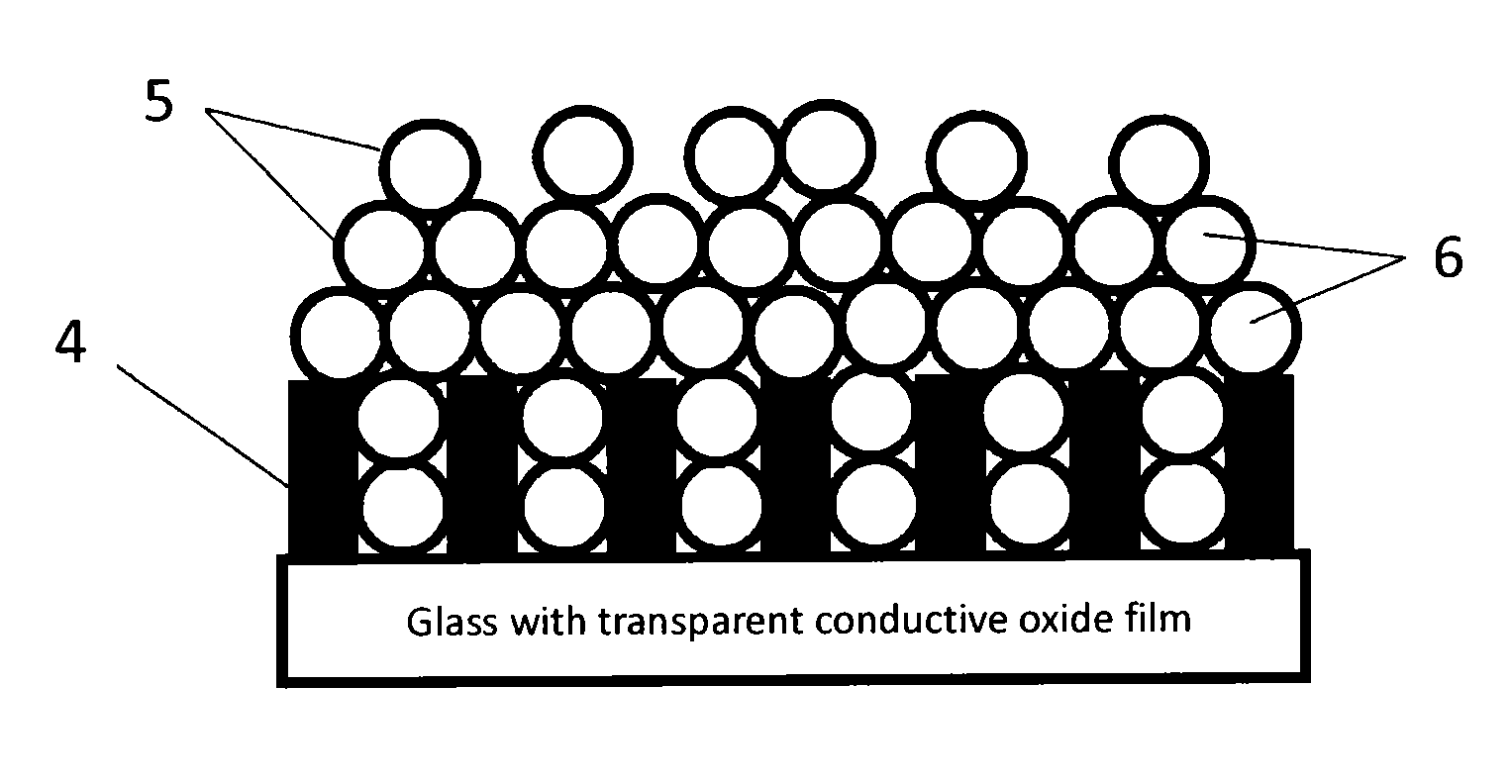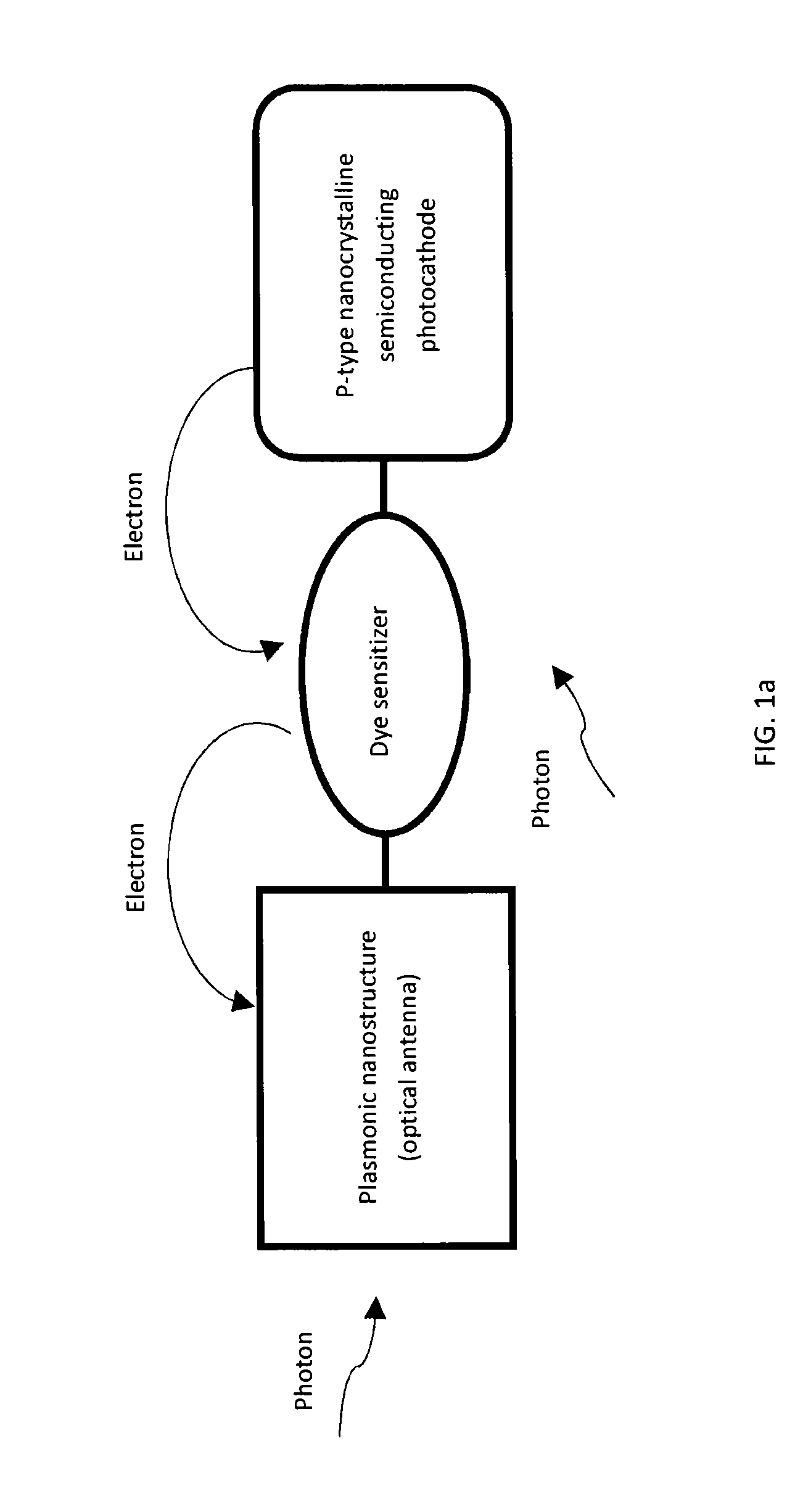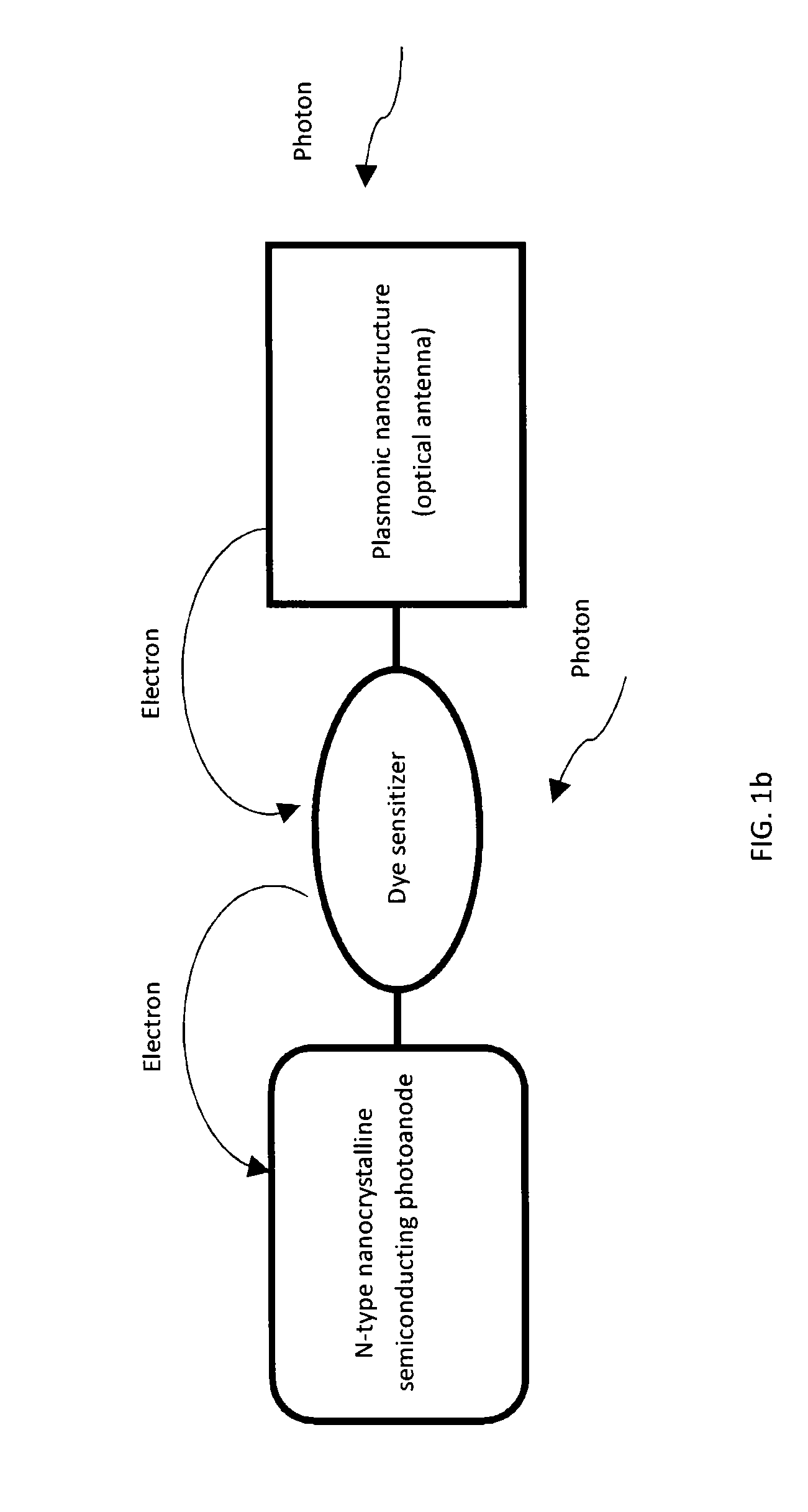Plasmonic enhanced tandem dye-sensitized solar cell with metallic nanostructures
a solar cell and tandem dye technology, applied in the field of solar cell systems, can solve problems such as degrading photocathode performance, and achieve the effect of enhancing respective electron and hole carrier transfer
- Summary
- Abstract
- Description
- Claims
- Application Information
AI Technical Summary
Benefits of technology
Problems solved by technology
Method used
Image
Examples
Embodiment Construction
[0039]The present invention discloses plasmonic enhanced tandem dye-sensitized solar cell with metallic nanostructures, and method of manufacture thereof.
[0040]Studies have shown that tandem dye-sensitized solar cell (TDSSC) is a novel approach for a cost effective renewable energy source with theoretical conversion efficiency over 40%. This conversation efficiency is significantly higher than the recent record of 13% with non-tandem DSSC devices.
[0041]Metallic nanostructures of 10 nm to 100 nm can absorb visible light 100-1000× more efficiently than many dyes. According, the plasmonic absorption can be tuned for every specific region of the AM1.5 spectrum via nanoengineering. Such high absorption apparently is the result of localized surface plasmon resonance (LSPR) which is also responsible for the surface enhanced Raman scattering (SERS) effect. Therefore, plasmonic nanostructures can be regarded as optical antennas operating in the visible range of the electromagnetic spectrum. ...
PUM
 Login to View More
Login to View More Abstract
Description
Claims
Application Information
 Login to View More
Login to View More - R&D
- Intellectual Property
- Life Sciences
- Materials
- Tech Scout
- Unparalleled Data Quality
- Higher Quality Content
- 60% Fewer Hallucinations
Browse by: Latest US Patents, China's latest patents, Technical Efficacy Thesaurus, Application Domain, Technology Topic, Popular Technical Reports.
© 2025 PatSnap. All rights reserved.Legal|Privacy policy|Modern Slavery Act Transparency Statement|Sitemap|About US| Contact US: help@patsnap.com



